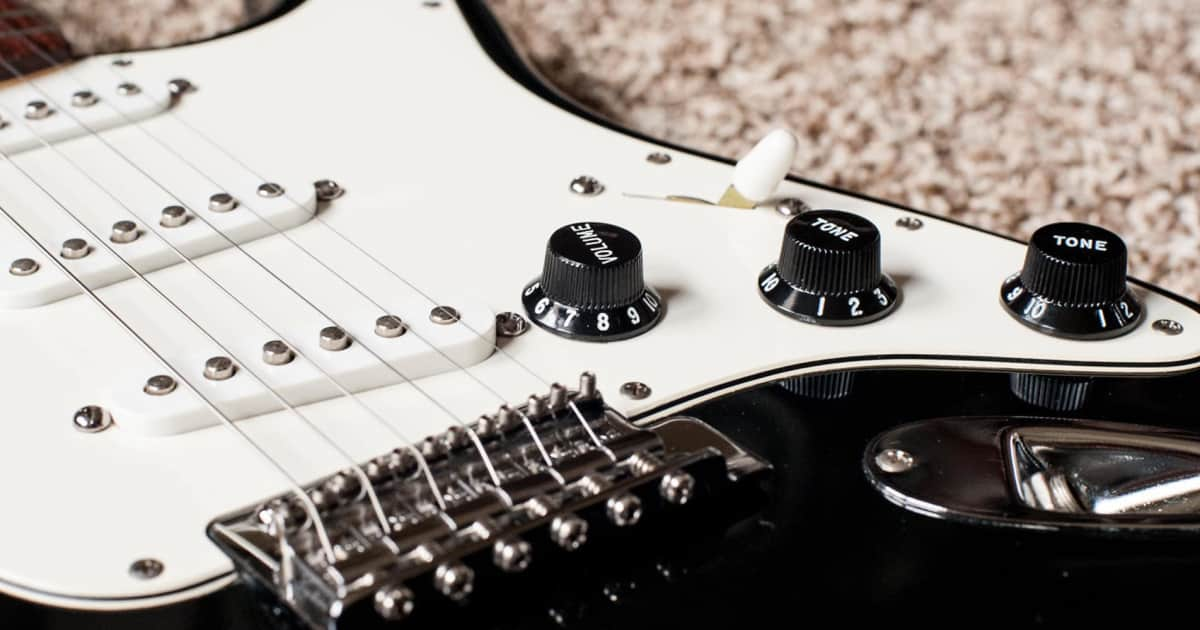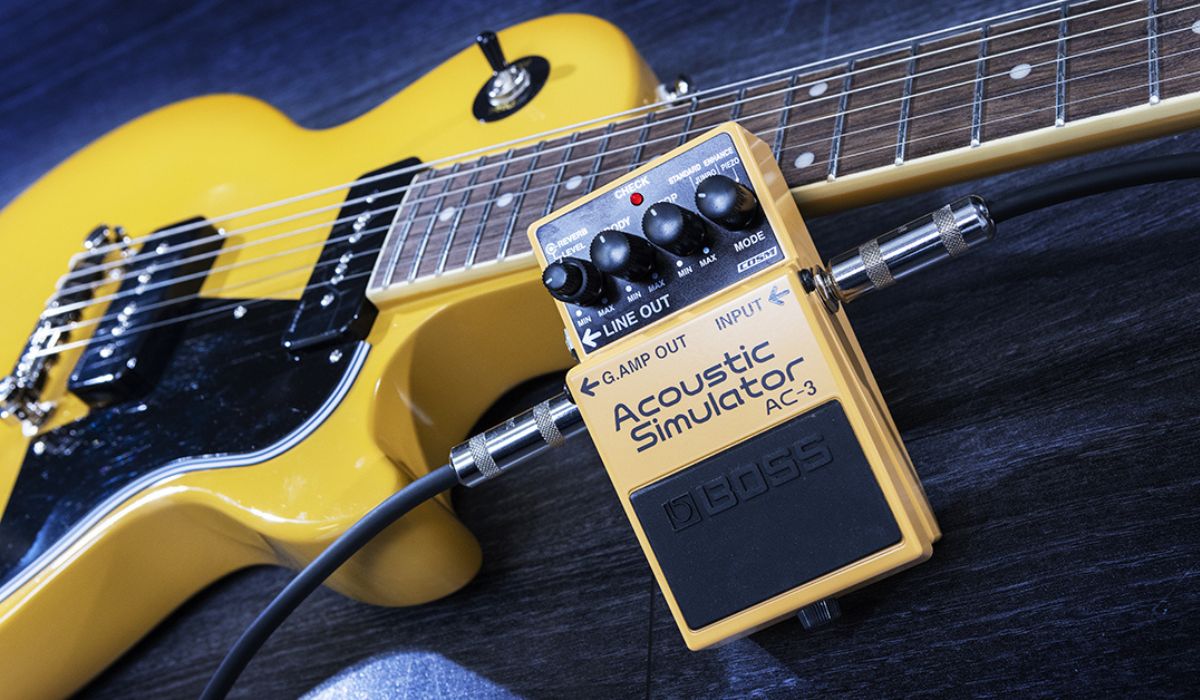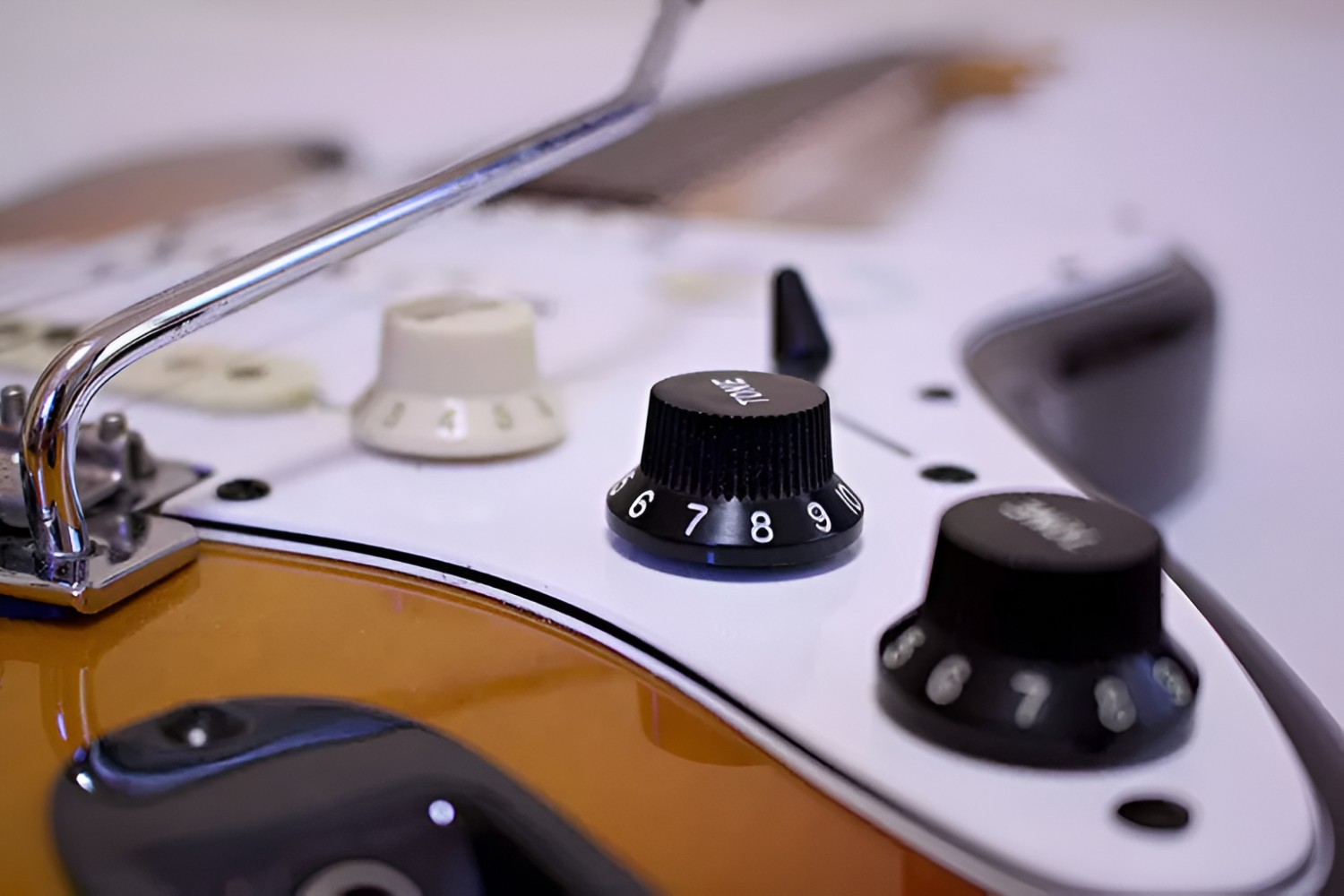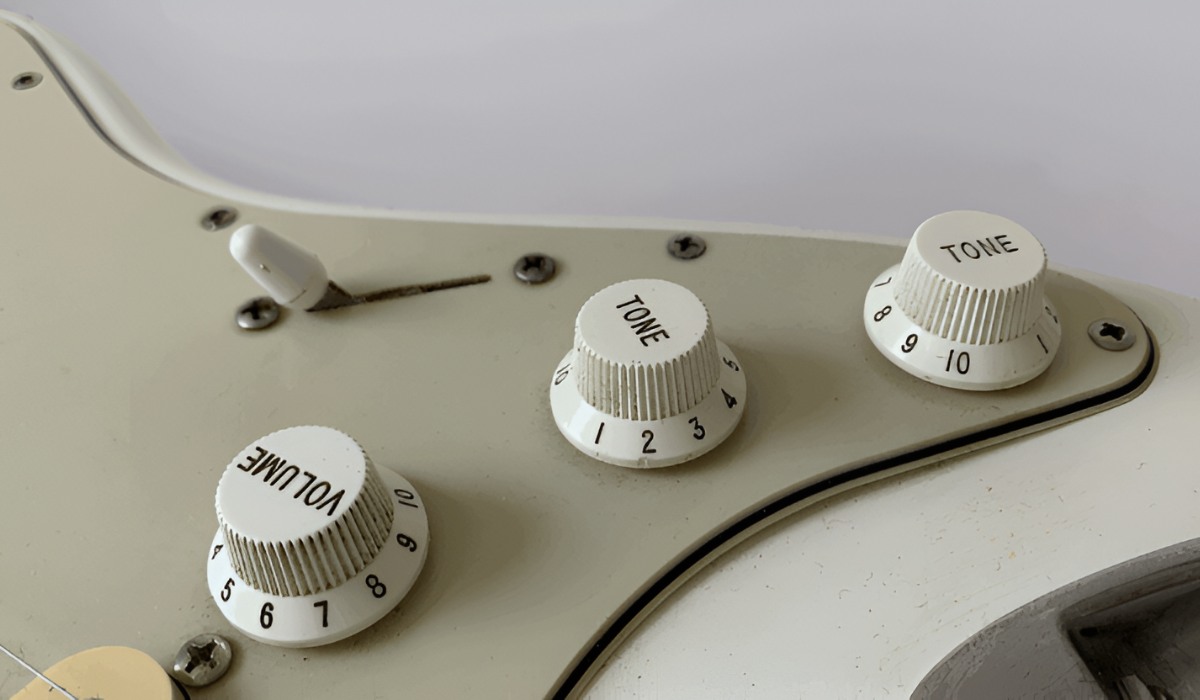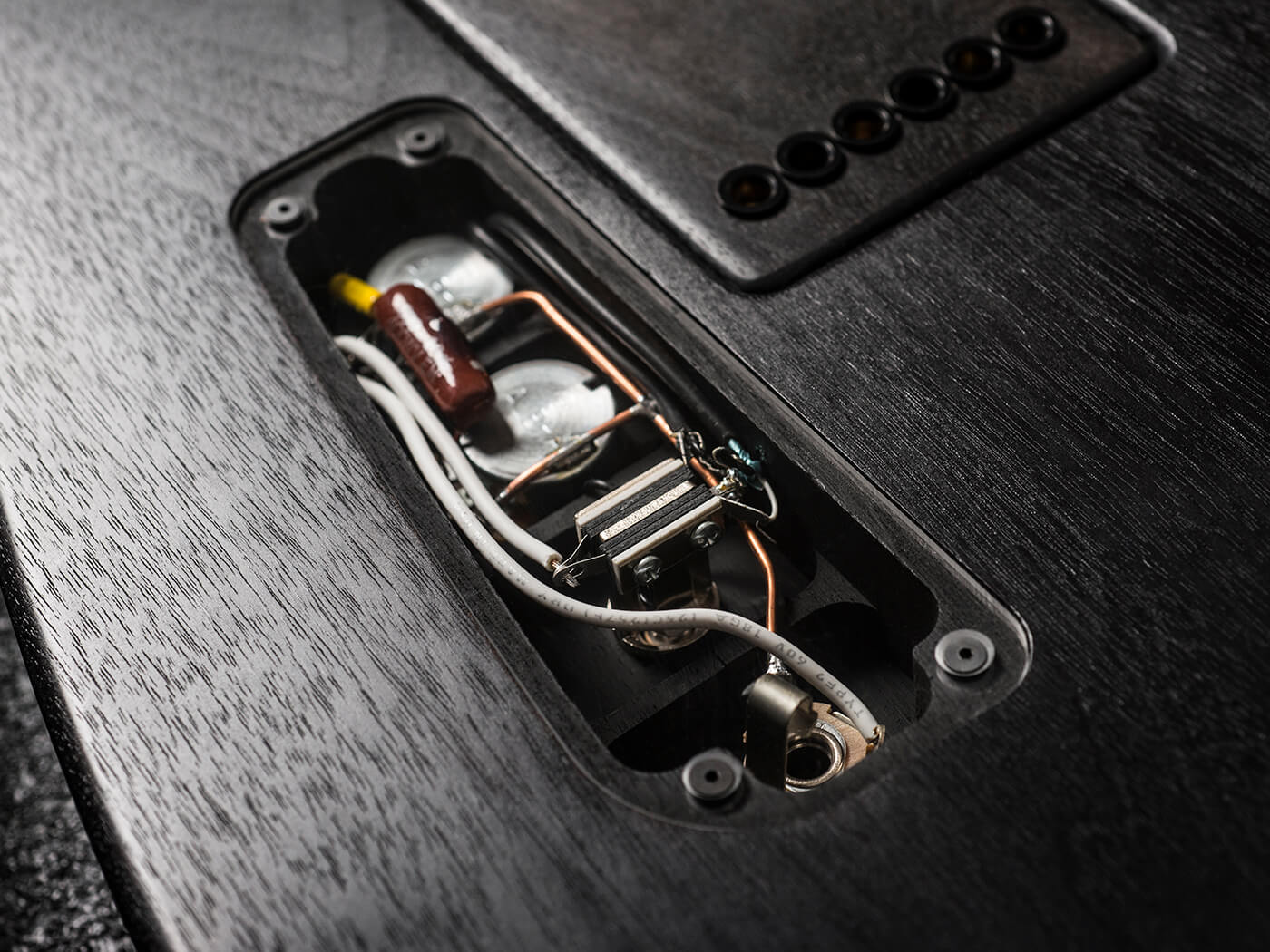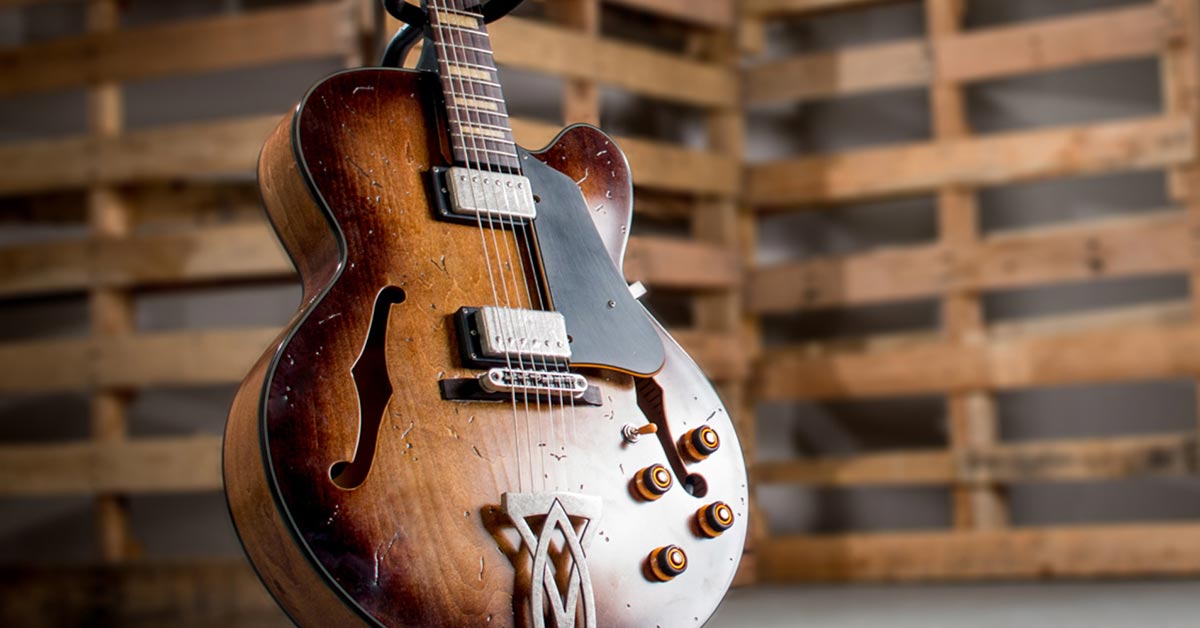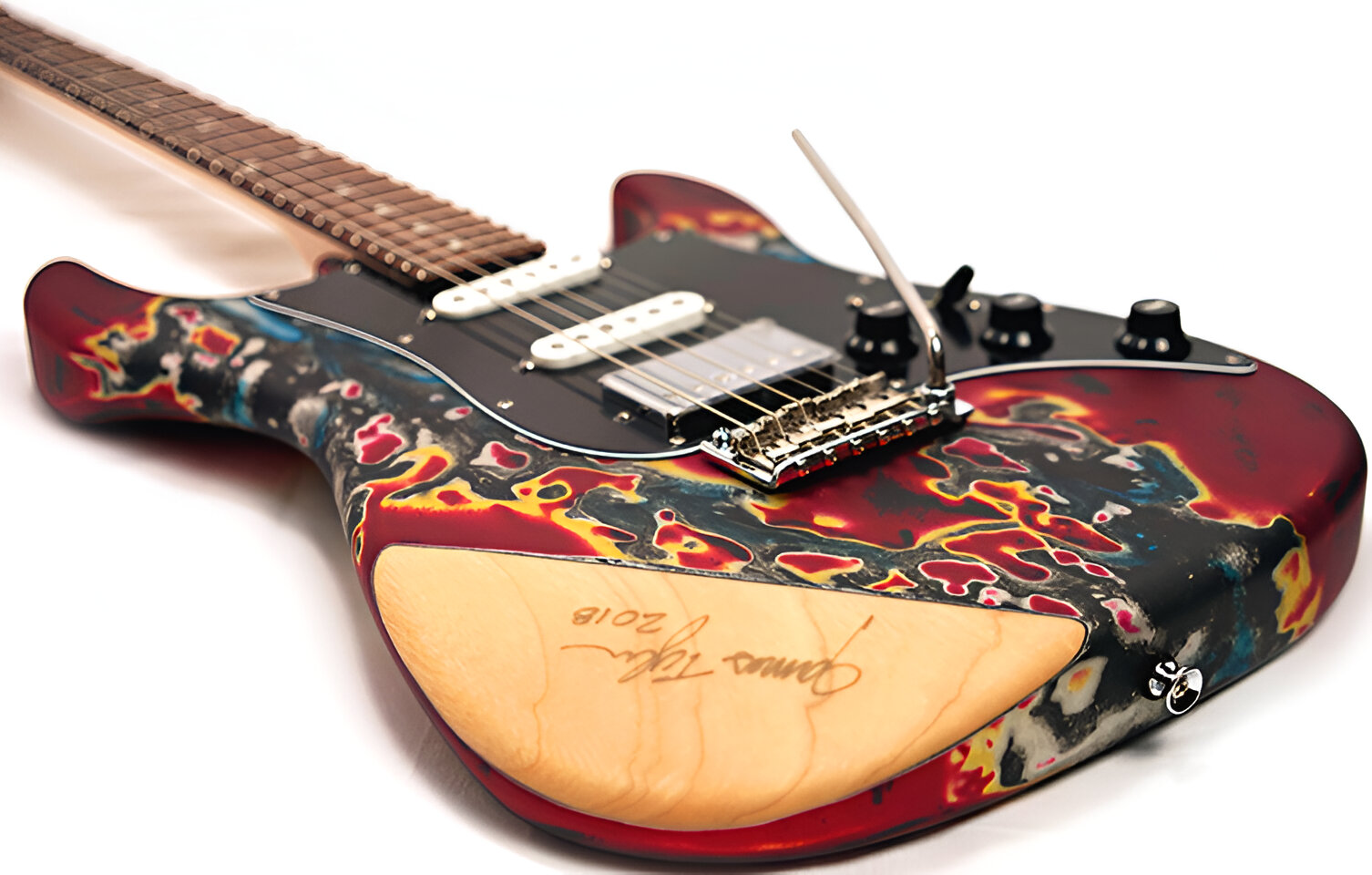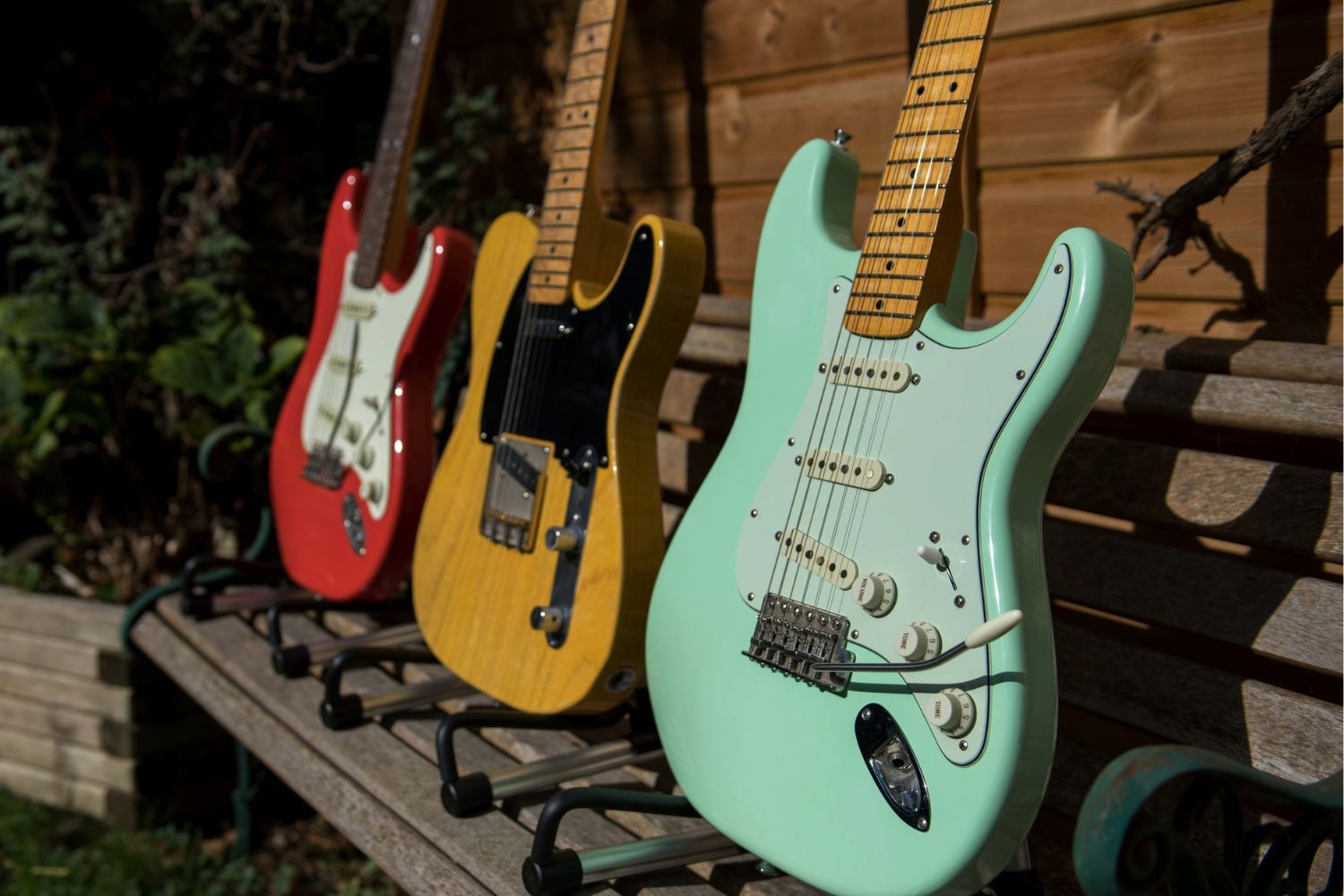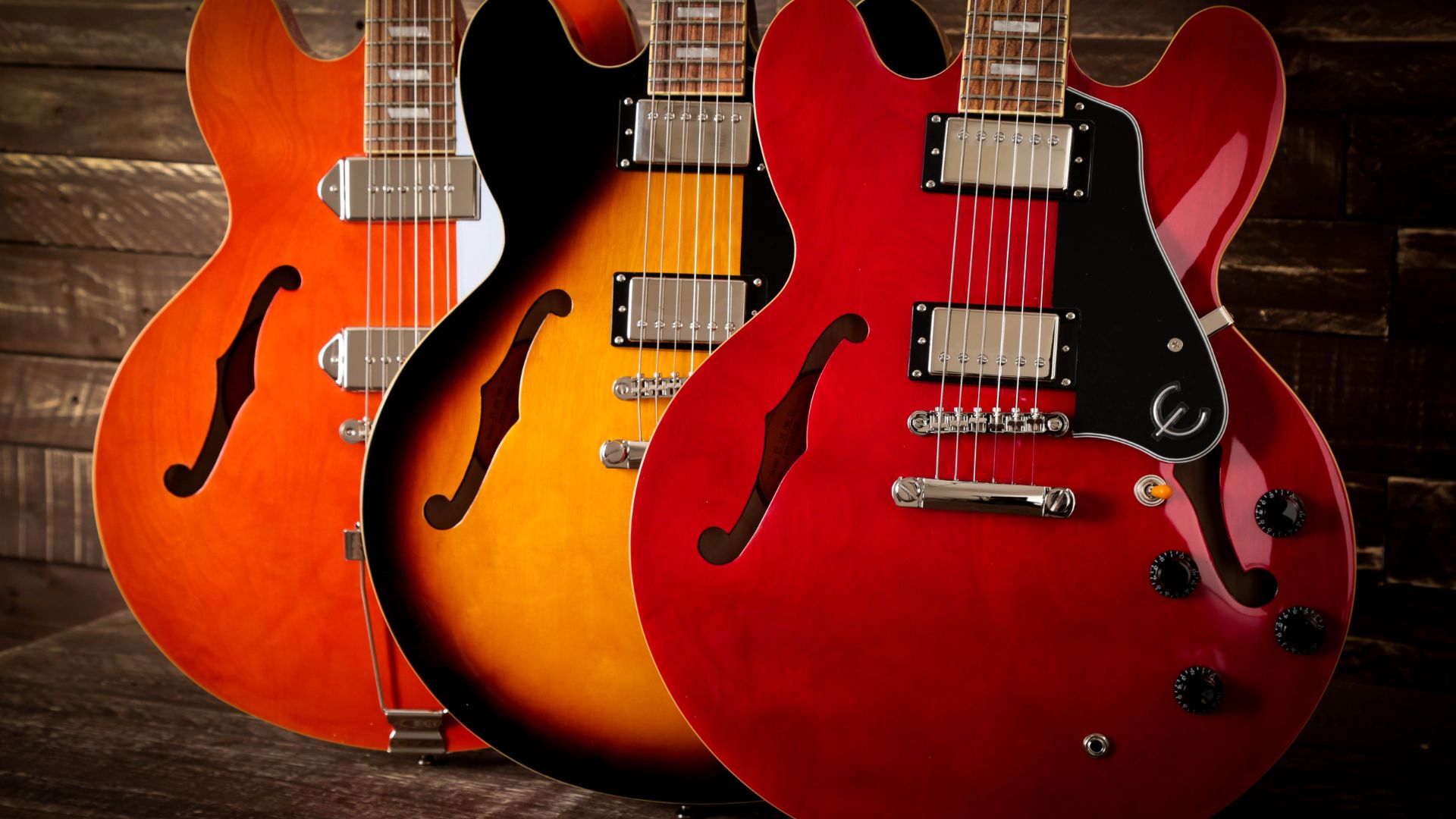Introduction
Electric guitars are marvels of engineering, combining intricate electronics with timeless musical artistry. These instruments are equipped with various knobs and switches, each serving a distinct purpose in shaping the guitar's sound. Understanding the function of these controls is essential for any guitarist looking to craft their desired tones. In this comprehensive guide, we will delve into the intricacies of electric guitar knobs, shedding light on their roles and imparting valuable insights for players of all levels.
Navigating the array of knobs and switches adorning an electric guitar can be daunting for beginners, but fear not! This guide will demystify these controls, empowering you to harness their potential and unlock a world of sonic possibilities. Whether you're a novice eager to grasp the fundamentals or a seasoned player seeking a deeper understanding, this exploration of electric guitar knobs is sure to enrich your musical journey.
The volume knob, tone knob, and pickup selector switch are the primary focus of our discussion, as they play pivotal roles in shaping the guitar's sound. Additionally, we will explore other controls that may be present on certain electric guitar models, providing a comprehensive overview of the various features you may encounter.
By the end of this guide, you will possess a newfound appreciation for the intricacies of electric guitar controls, equipping you with the knowledge to manipulate these elements with confidence and creativity. So, grab your guitar, prepare to embark on a sonic adventure, and let's unravel the mysteries behind the knobs and switches that define the electric guitar experience.
Volume Knob
The volume knob on an electric guitar is a fundamental control that allows the player to adjust the output level of the instrument. Located within easy reach of the picking hand, typically near the guitar’s bridge or on the pickguard, the volume knob serves as a gateway to dynamic expression and tonal versatility.
By turning the volume knob clockwise, the signal level increases, resulting in a louder sound. Conversely, turning it counterclockwise reduces the volume, allowing for softer, more subdued tones. This simple yet powerful adjustment empowers guitarists to seamlessly transition from gentle, introspective passages to blistering, high-energy solos, all with the twist of a knob.
One of the most compelling aspects of the volume knob is its ability to shape the guitar’s tone when rolled back. At lower volume settings, the guitar’s signal interacts differently with the amplifier, yielding a cleaner, more delicate sound with enhanced clarity. This technique is commonly employed to achieve sparkling, crystalline tones for rhythm playing or to coax expressive, emotive textures from sustained notes and chords.
Furthermore, the volume knob facilitates dynamic control, allowing players to execute swells and fades with precision. This expressive capability is particularly pronounced when employing techniques such as volume swells, where the knob is manipulated to gradually introduce or diminish the guitar’s sound, evoking ethereal, orchestral-like effects.
It’s important to note that the volume knob’s influence extends beyond mere loudness adjustment. When combined with distortion or overdrive effects, subtle manipulations of the volume knob can yield nuanced changes in the character and intensity of the guitar’s saturated tones. This dynamic interplay between the volume knob and various effects pedals underscores its significance as a cornerstone of sonic sculpting and artistic expression.
Whether employed for crafting evocative cleans, commanding lead tones, or nuanced dynamics, the volume knob stands as a quintessential tool in the guitarist’s arsenal. Its multifaceted nature empowers players to mold their sound in real time, making it an indispensable feature that warrants thoughtful exploration and experimentation.
Tone Knob
The tone knob on an electric guitar is a versatile control that significantly influences the timbre and character of the instrument’s sound. Positioned alongside the volume knob, the tone knob empowers guitarists to sculpt their sonic identity with finesse, offering a spectrum of tonal possibilities at their fingertips.
When the tone knob is turned clockwise, higher frequencies are accentuated, lending a brighter, more sparkling quality to the guitar’s sound. This adjustment can imbue chords and single notes with a crisp, articulate articulation, making it ideal for genres that demand clarity and definition, such as funk, pop, or country music.
Conversely, rotating the tone knob counterclockwise attenuates the higher frequencies while emphasizing the warmer, mellower aspects of the guitar’s tonal palette. This darker tonal profile is well-suited for genres like jazz, blues, and classic rock, where a smoother, more rounded sound is often preferred.
One of the most compelling attributes of the tone knob is its capacity to influence the expressiveness and emotive quality of the guitar’s voice. By judiciously adjusting the tone knob, players can infuse their playing with a spectrum of moods, from bright and exuberant to warm and introspective, enhancing the emotional resonance of their musical expression.
Moreover, the tone knob’s impact extends beyond its immediate role in shaping the guitar’s sound. When coupled with effects pedals, such as overdrive, distortion, or modulation, the tone knob becomes a potent tool for tailoring the behavior and response of these effects, allowing for nuanced adjustments that complement the player’s artistic vision.
It’s worth noting that the tonal nuances afforded by the tone knob are not limited to a static setting. Guitarists can dynamically manipulate the tone knob during performance, seamlessly transitioning between varying degrees of brightness and warmth to suit the evolving needs of the music. This real-time tonal flexibility adds a layer of expressiveness and creativity to the guitarist’s toolkit, enabling them to craft immersive sonic landscapes and captivate audiences with their musical storytelling.
Ultimately, the tone knob stands as a pivotal element in the sonic palette of the electric guitar, offering a gateway to an expansive realm of tonal textures and expressive possibilities. Its influence reverberates through genres and styles, making it an indispensable ally for any guitarist seeking to articulate their unique voice through the instrument.
Pickup Selector Switch
The pickup selector switch, often referred to simply as the “pickup switch,” is a crucial component of an electric guitar’s control layout, dictating which pickups are active and thus shaping the instrument’s tonal characteristics. Positioned near the guitar’s bridge or on the pickguard, this switch enables players to seamlessly navigate between different pickup configurations, unlocking a diverse array of sonic possibilities.
Most electric guitars feature multiple pickups, typically including the bridge, middle, and neck pickups. The pickup selector switch allows the player to choose between these pickups individually or in combination, each configuration imbuing the sound with distinctive tonal qualities.
When the switch is set to the bridge pickup, the guitar yields a bright, articulate sound with enhanced treble frequencies, making it well-suited for cutting through dense mixes and delivering searing lead tones. In contrast, the neck pickup produces a warmer, rounder sound, accentuating the bass frequencies and delivering a smooth, mellow timbre that excels in delivering soulful, expressive tones.
By toggling between these pickups or engaging a combination of them, players can tailor their sound to suit a diverse range of musical contexts. For instance, blending the bridge and middle pickups can yield a balanced, chime-like tone ideal for rhythmic chordal work, while activating the neck and middle pickups simultaneously can produce a lush, full-bodied sound that shines in melodic passages and solos.
Furthermore, the pickup selector switch is a gateway to tonal versatility, allowing guitarists to explore the sonic interplay between different pickup combinations and adapt their sound to suit various genres and playing styles. Whether pursuing the twangy textures of country music, the searing leads of rock, or the soulful resonance of blues, the pickup selector switch serves as a conduit for sonic exploration and artistic expression.
It’s important to note that the pickup selector switch isn’t solely about tonal variation; it also plays a crucial role in shaping the guitar’s response and feel. Different pickup combinations can affect the instrument’s dynamic range, attack, and sustain, providing a nuanced playing experience that responds to the player’s touch and articulation.
Ultimately, the pickup selector switch stands as a cornerstone of tonal sculpting and sonic versatility, offering a gateway to a rich tapestry of sounds and textures. Its influence permeates every note and chord, making it an indispensable tool for any guitarist seeking to articulate their musical vision through the expressive canvas of the electric guitar.
Other Controls
Beyond the volume knob, tone knob, and pickup selector switch, some electric guitars may feature additional controls that contribute to the instrument’s sonic flexibility and expressiveness. These supplementary features, while varying across different guitar models, can significantly impact the tonal palette and playing experience, offering further avenues for artistic exploration and sonic refinement.
One common control found on many electric guitars is the “master tone” or “tone bypass” switch, which serves as a convenient shortcut for toggling the tone knob on or off. When engaged, this switch bypasses the tone circuit, allowing the guitar to emit its signal without the influence of the tone knob’s settings. This feature can be particularly useful for swiftly transitioning between different tonal profiles during live performances or studio recordings, providing a seamless means of altering the guitar’s sound without requiring manual adjustments to the tone knob.
Some electric guitars also incorporate coil-split or coil-tap switches, which enable players to access a broader spectrum of single-coil and humbucker tones from their pickups. By activating these switches, the guitar’s pickups can be reconfigured to operate in a single-coil mode, yielding a brighter, twangier sound reminiscent of traditional single-coil pickups. This feature expands the sonic versatility of the instrument, allowing players to seamlessly navigate between the distinct tonal characteristics associated with single-coil and humbucker pickups, enhancing their creative palette.
Another notable addition to the array of electric guitar controls is the presence of onboard active or passive equalization (EQ) circuits. These EQ controls, often in the form of knobs or sliders, enable players to finely adjust the guitar’s tonal balance, emphasizing or attenuating specific frequency bands to tailor the instrument’s sound to their preferences. This level of tonal customization empowers guitarists to fine-tune their sonic footprint, ensuring that their playing resonates with the ideal blend of warmth, clarity, and presence.
Furthermore, some electric guitars may feature specialized switches or controls that facilitate unique functionalities, such as phase reversal switches, series/parallel pickup wiring options, or built-in preamp circuits. These advanced features offer a wealth of tonal and sonic possibilities, allowing players to delve into experimental sounds and unconventional textures that push the boundaries of traditional guitar tones.
Ultimately, the inclusion of these additional controls underscores the dynamic nature of the electric guitar, providing players with a rich tapestry of tonal options and sonic manipulations. Whether seeking classic vintage tones, modern sonic innovations, or uncharted sonic territories, these supplementary controls serve as catalysts for artistic exploration and sonic discovery, enriching the guitarist’s musical journey with boundless creative potential.
Conclusion
Electric guitars are not merely instruments; they are conduits of sonic expression, each adorned with an array of controls that empower players to shape their musical identity with precision and artistry. From the fundamental volume and tone knobs to the pivotal pickup selector switch and a myriad of supplementary controls, the electric guitar’s interface is a realm of boundless sonic potential, inviting players to embark on a journey of tonal discovery and creative exploration.
Understanding the nuanced functionality of each control fosters a deeper connection with the instrument, enabling guitarists to harness its expressive capabilities to articulate their musical vision. The volume knob stands as a gateway to dynamic expression, facilitating seamless transitions between gentle whispers and thunderous roars, while the tone knob offers a spectrum of tonal hues, from bright and shimmering to warm and resonant, enriching the guitar’s sonic palette with emotive depth.
The pickup selector switch serves as a gateway to a diverse sonic landscape, allowing players to navigate between distinctive pickup configurations and tailor their sound to suit a myriad of genres and playing styles. Additionally, the presence of supplementary controls further expands the instrument’s sonic versatility, offering advanced tonal sculpting capabilities that inspire innovative sonic explorations and artistic innovation.
As players embark on their musical odyssey with the electric guitar, these controls cease to be mere knobs and switches; they become conduits of sonic possibility, inviting players to weave their unique narratives through the language of music. Whether conjuring crystalline cleans, searing leads, or soul-stirring melodies, the electric guitar’s controls are the artist’s brushstrokes, painting vibrant sonic landscapes that resonate with emotion and creativity.
In the hands of a skilled guitarist, these controls transcend their mechanical functions, becoming vessels of expression and conduits of emotion. They embody the guitarist’s voice, carrying the nuances of their touch, the depth of their passion, and the essence of their musical identity. Through these controls, the electric guitar becomes an extension of the player’s soul, channeling their innermost thoughts and feelings into a symphony of sound.
Thus, as we conclude this exploration of electric guitar controls, let us not view them as mere components of an instrument, but as portals to a world of sonic wonder and artistic revelation. May every twist of a knob, every flick of a switch, and every stroke of a string resonate with the boundless creativity and unwavering passion that define the art of music.







